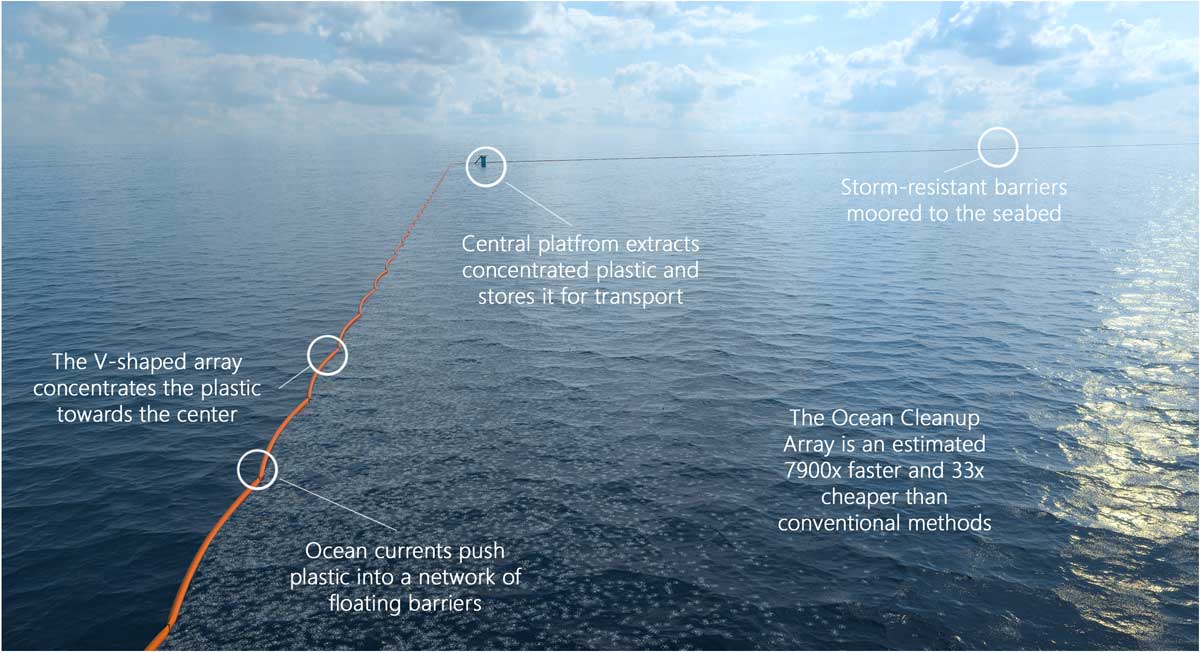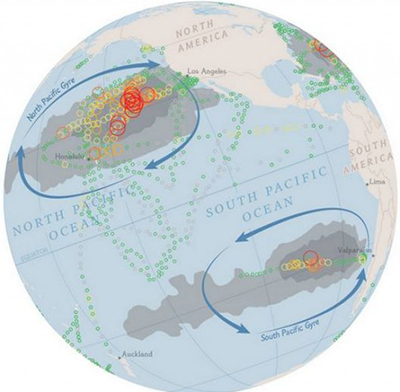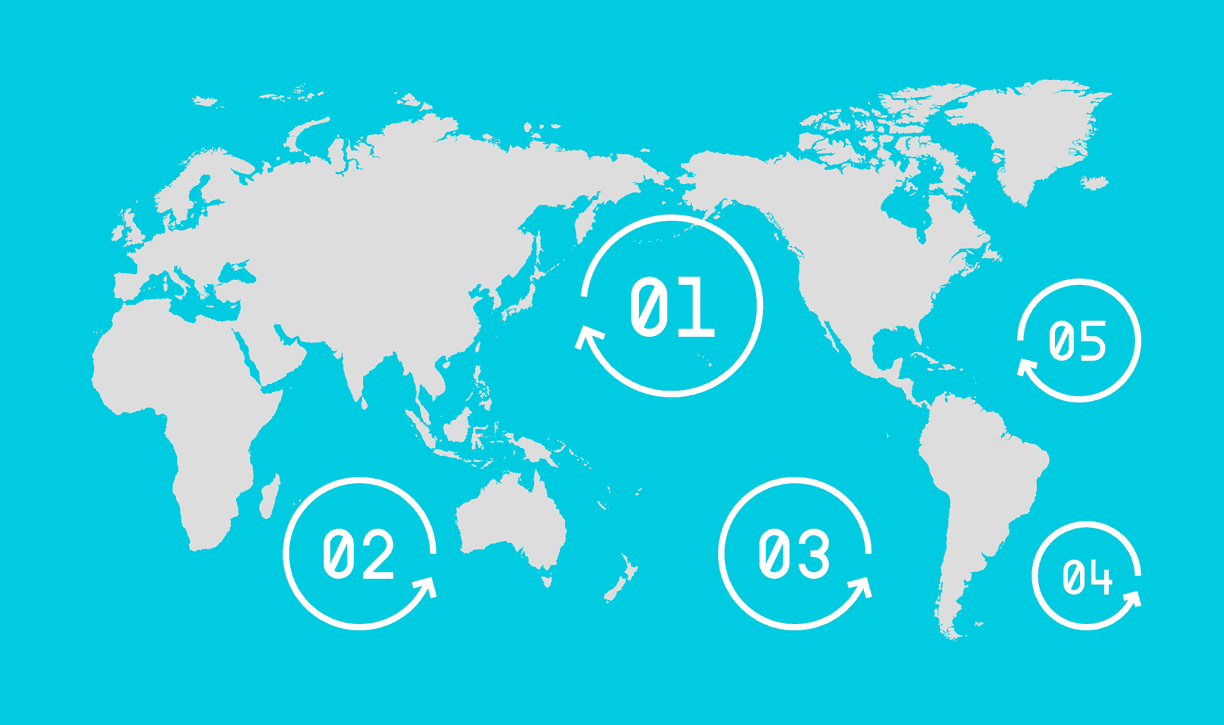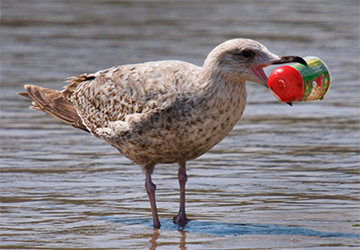Ocean Debris Network
Key concepts:
• The Ocean Conservancy
• Sylvia Earle – Mission Blue model project at Cabo Pulmo
• Smithsonian diver Laurie Penland: filming the debris monster
• estimated ocean plastic debris: 5 trillion tonnes; 269,000 tonnes
• emerging ocean debris network; many organizations working on ocean health
The Ocean Conservancy has been a leader in tracking the ocean debris problem. The trash that washes ashore is a signal of the problem in the ocean.
Sylvia Earle, with her foundation Mission Blue, has worked to develop marine sanctuaries and celebrates communities cleaning up their shorelines, such as Cabo Pulmo Marine Park. An Ocean Debris Network (OD Net) is emerging to address a problem that demands creative solutions across disciplines.
Smithsonian photographer and dive officer Laurie Penland filmed this swirling garbage monster at the Smithsonian Marine Research Station on Carrie Bow, a small island on the southern end of Belize.
The work of media artists like Penland evokes an emotional response to the uncanny, eerie world of plastic that we humans are creating in the sea. Raising awareness can enlist financial support and talent to the cause. Penland said, “I was struck by the contents – all items I personally use at home and mostly plastics. I tried to think of how I could rid my house of plastic.”
Many divers and scientists, Sylvia Earle, former Chief Scientist of NOAA (National Oceanographic and Atmospheric Agency), Founder of Mission Blue, andsuch as Mary Crowley, Founder of Ocean Voyages Institute, know this ocean problem firsthand and saw the dire consequences of neglect before most others. Sylvia Earle describes her life with the ocean and her dream to save it, quoting Tim Brown that “the economy is a wholly owned subsidiary of the environment.”
Boyan Slat, 21-year-old founder of the Ocean Cleanup project in the Netherlands, has attracted press and money, while Sylvia Earle, with a PhD in Oceanography, former Chief Scientist f NOAA, and records for deep sea dives, has not received the attention or level of financial support that her expertise deserves. She has focused on this problem for decades, and is highly informed with a vision for establishing marine sanctuaries around the world,
Boyan Slat’s ambitious more mechanized approach has effectively brought attention to this grave problem. But it could be more effective to start with removal of ghost nets, and by bringing ships to the plastic that needs removal rather than waiting for the plastic to flow into a large technological installation also deserves financial support.
Estimated at more than five trillion pieces of plastic, collectively weighing nearly 269,000 tonnes, are floating in the world’s oceans, causing damage throughout the food chain. The enormity of the problem, calculated from data taken from 24 expeditions over a six-year period to 2013, was compiled in 2014 and published under the title
Plastic Pollution in the World’s Oceans: More than 5 Trillion Plastic Pieces Weighing over 250,000 Tons Afloat at Sea
in the scientific journal PLOS One, the first study to look at plastics of all sizes in the world’s oceans. Data collected by scientists from the US, France, Chile, Australia and New Zealand suggests a minimum of 5.25 tons of plastic particles in the oceans, most of them “micro plastics” measuring less than 5mm, largely deriving from products such as food and drink packaging and clothing. Millions of pieces of debris float in five large, subtropical gyres, diagrammed below in National Geographic.
Marine ecologist Andres Cozar Cabanas led a team to complete the first ever map of ocean trash (below), published in the July 7, 2014 Proceedings of the National Academy of Sciences. The full article is here, and all map views are shown here.

Creative teams like the World Game Beta team, a 2009 finalist in the Buckminster Fuller Challenge, were inspired by the ocean debris challenge to imagine how Ocean Cleanup could attract broad participation. The four team members, Katy Barkan, Jimena Leiva Roesch, Manuel Mansylla, and Alessandro Preda, proposed an interface with a non-hierarchical system of buttons as a virtual infrastructure, enabling diverse “players” to collaborate, continually adding fresh content and updating old content. The following year Manuel Mansylla launched Trash Patch. While his art installations drew attention to the challenge, as did Australian filmmaker Richard Pain’s threat to swim across the Pacific through the trash patch, both made news for awhile, and made a contribution by making news, but attention was too hard to sustain. Katy Barkan developed a project for Gates to Iquitos, Peru, where water level fluctuates thirty feet over the course of a year. John Todd, winner of the first Buckminster Fuller Challenge Award, developed a concept called Ocean Restorer, extending Ocean Arks International, which he co-founded with Nancy Todd three decades ago.
Laura Parker wrote in a National Geographic article titled Nearly Every Seabird on Earth is Now Eating Plastic (September 2, 2015) that plastic is found in 90% of seabirds, as this albatross in Australia poses to confirm.
Charles Moore, seaman who first sited a swirling gyre of plastic in 1997, thought it would bankrupt a nation to clean it up. What seemed impossible less than two decades ago must now be tackled from many angles because ocean health is critical for all life on Earth.
An Ocean Debris Network requires sustained, monumental effort to counter decades of thoughtless ocean dumping. The Marine Debris Tracker mobile application is a joint initiative of the NOAA Marine Debris Program and the Southeast Atlantic Marine Debris Initiative (SEA-MDI), a program in the University of Georgia College of Engineering. The tracker app allows us all to make a difference by checking in when we find trash on our coastlines and waterways. It’s now on APPLE itunes. This app brings this great problem to a large, decentralized population of swimmers, boaters, and beachcombers, all able to share information with each other and with expeditions committed to cleaning up our plastic-filled ocean.
The film above is from The Smithsonian Institution ©2011.
See the app @ earthDECKS.org
Saving Our Oceans from Plastic: articles by Zann Gill
- Adverse Health Effects of Plastic
- Aquaria – Informal Learning Network
- Beat the Microbead
- Bibliography: Plastic Roads
- Boyan Slat: Floater Technology for Ocean Cleanup
- Complex Systems Problems
- Cradle to Grave: Plastic Supply Chain
- Dame Ellen MacArthur: The Circular Economy
- Sylvia Earle: Learning for a Plastic World
- earthDECKS Limelights: Companies to Watch
- Enshrouded in Plastic
- Flamingos Signal the Future We Face
- Floating Trash: More than 4x as bad as we thought
- Give the World a Helping Hand: 3D Prostheses
- Global Ocean Sensing
- Industry Response to the Plastic Challenge
- Nature’s Innovators: plastic consumers
- Ocean Ingenuity
- Oceans – Measuring Planet Health
- Plastic Bank – The Exchange Economy
- Plastic – Climate Change Connection: Israel & UBQ
- PLASTIC: Complex Systems Problem
- Plastic: Drinking Water, Table Salt & Mother’s Milk
- Plastic Footprint – Carbon Footprint
- Plastic-Eating Enzyme
- Plastic Gyres and Social Justice
- Plastic Impact Calculator
- Plastic Pollution Coalition: Campaign vs Single Use Plastic
- Plastic & Public Health: Endocrine Disruptors
- PLASTIC: Overview of National Leadership
- Plastic Roads – Global Innovation Ecosystem
- Plastic – The Circular Economy
- The Plasticene
- Plastiki: adventure stories & a big message
- Raising Awareness of Plastic Hazards


